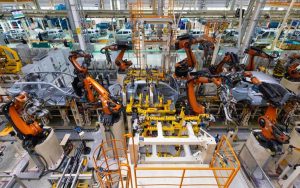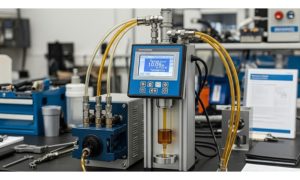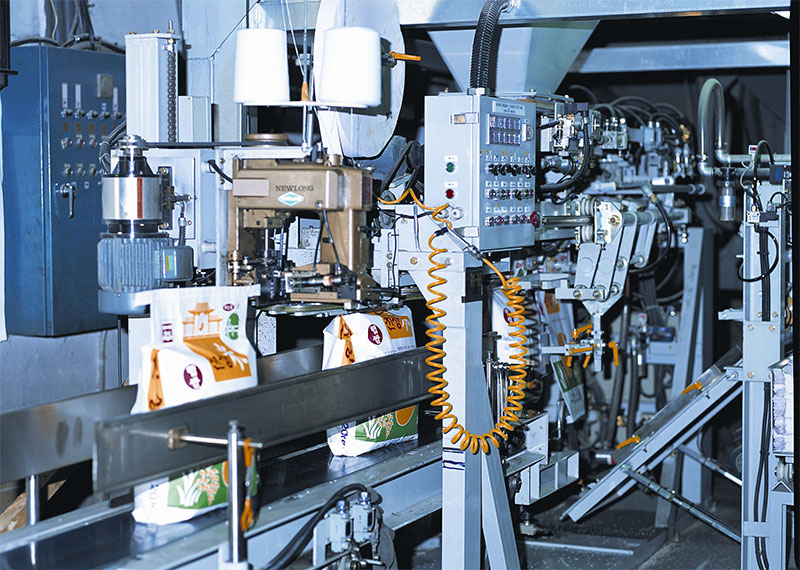Walk down any grocery aisle and you’ll see the quiet work of nitrogen at scale, puffed snack bags that aren’t actually “air,” crisp coffee that smells freshly roasted weeks later, bakery items that resist staling a little longer. Nitrogen’s real value is simple: it pushes oxygen out. By displacing oxygen, it slows oxidation, curbs aerobic microbes, and helps delicate aromas hang on. For food brands under pressure to cut waste and improve consistency, understanding how nitrogen extends food life isn’t just chemistry trivia: it’s a competitive edge.
The science behind nitrogen’s role in oxidation prevention
Oxygen drives the chemical reactions that make foods taste stale, smell off, and lose color. Lipid oxidation is the big culprit in nuts, coffee, chocolate coatings, snack oils, and many baked goods. In simple terms, oxygen reacts with unsaturated fats to form peroxides and aldehydes, the compounds behind rancid flavors.
Nitrogen steps in as an inert blanket. It doesn’t react with food: it just lowers the partial pressure of oxygen around it. When oxygen is scarce, oxidation slows dramatically because fewer oxygen molecules collide with reactive sites in the food matrix. That’s the kinetic reality: reduce O2 concentration, reduce the reaction rate.
A few practical points make a big difference:
- Headspace control: Flushing packages with nitrogen drops residual O2 to target levels (often below 2%, sometimes under 0.5% for very sensitive products). Lower O2 means fewer free-radical chain reactions.
- Film and seal integrity: Even perfect flushing fails if oxygen leaks back in. Low-OTR (oxygen transmission rate) films and strong seals keep O2 out for the full shelf-life.
- Purity matters: Food-grade nitrogen typically ranges from 99.5% to 99.999% purity. Higher purity helps maintain very low O2 in headspace and silos.
Oxidation isn’t only about fats. Pigments (like chlorophyll in green vegetables) and vitamins (such as vitamin C) oxidize too. Nitrogen doesn’t “preserve” these indefinitely, but by lowering available oxygen, it slows the cascade of degradative reactions so products reach customers closer to how they left the line.
Preserving flavor and aroma in coffee, snacks, and baked goods
Flavor lives in volatile compounds, and oxygen is their enemy. Coffee makes this painfully obvious. As roasted beans degas CO₂, the aromatic profile evolves: oxygen intrusion accelerates staling, flattening sweetness and aromatics while pushing woody, cardboard-like notes. Nitrogen flushing (and often one-way valves for whole-bean bags) keeps headspace oxygen extremely low so roasters can ship with confidence. For an in-depth look at nitrogen-generation systems and gas-purging equipment used across the food industry, PneuTech offers practical insights into maintaining product integrity through controlled atmosphere packaging.
For snacks cooked in oil, chips, extruded puffs, nuts, lipid oxidation is the main route to rancidity. Nitrogen replaces the oxygen in the bag, protecting the oil matrix and helping maintain crunch. The “pillow” of gas is intentional: it’s not just inerting, it’s also a shock absorber that prevents breakage in transport.
Baked goods are a mixed story. Staling involves moisture migration and starch retrogradation, processes nitrogen can’t stop. But it can slow oxidative flavor loss, protect inclusions (nuts, chocolate), and help maintain color in glazes. When combined with moisture barriers and proper cooling, nitrogen-flushed packaging often yields a modest but meaningful shelf-life bump.
Practical targets commonly used by producers:
- Coffee: residual O2 often <1% in whole-bean bags: stringent QC with in-line O2 analyzers.
- Snacks and nuts: O2 typically <2% after flush: low-OTR film selection is critical to keep it there.
- Baked goods: O2 targets vary: many bakeries pair nitrogen with CO2 or ethanol emitters depending on mold risk and product water activity.
Modified atmosphere packaging (MAP) as a key preservation method
Modified atmosphere packaging is the systematic use of protective gases, commonly nitrogen, carbon dioxide, and sometimes a touch of oxygen, to control the in-package environment. Nitrogen provides the inert backbone: CO2 contributes antimicrobial activity: a small amount of oxygen may be used for red meat color or to deter anaerobic hazards in specific products.
Core elements of effective MAP:
- Gas mix design: Typical ratios for dry, fat-rich snacks are 100% N2 or N2-dominant blends. Fresh pasta, bakery, or cheese may use N2/CO2 blends (for example, 70/30) to inhibit mold and some spoilage bacteria.
- Film engineering: Select films by OTR and CO2 transmission rate. High-fat dry snacks need very low OTR: fresh foods may require carefully balanced permeability to avoid package collapse when CO2 dissolves.
- Process control: Achieving and holding target residual O2 requires dialed-in flushing cycles, proper dwell time on seal bars, and validated sealing parameters.
- Verification: Inline or at-line oxygen analyzers, leak detection (bubble tests, vacuum decay, or gas detection), and periodic shelf-life studies close the loop.
Safety note: Lowering oxygen suppresses many aerobic microbes, but some pathogens thrive in low-O2 conditions. That’s why MAP is never a stand-alone kill step. It works with HACCP controls, sanitation, and cold-chain discipline. For ready-to-eat or high-moisture products, validated temperatures and, when appropriate, CO2 levels are essential to mitigate risks like non-proteolytic C. botulinum.
When MAP is tuned correctly, producers often see shelf-life extensions of 2–3x for oxidation-prone products, with better flavor retention and fewer returns due to staleness.
Reducing microbial growth through oxygen displacement
Most spoilage molds and many bacteria need oxygen. Nitrogen doesn’t kill them, but it deprives them of what they need to multiply. In combination with CO2 (which diffuses into microbial cells and disrupts metabolism), nitrogen-based atmospheres create a less hospitable environment across a range of foods.
Where oxygen displacement shines:
- Nuts, seeds, and trail mixes: Primarily about oxidation, but low O2 also slows mold on higher-aw products.
- Cheese and bakery: MAP with N2/CO2 slows surface mold. Film choice and humidity control still matter.
- Ready-to-eat produce: More complex, some respiration is desirable, and specific O2/CO2 ratios are tuned to the product: pure nitrogen isn’t the goal here.
Numbers that guide operations:
- Many aerobic spoilage organisms slow dramatically when headspace O2 is below ~2%.
- CO2 at 20–40% in blends can add meaningful antimicrobial effect, but watch for flavor impacts and package collapse as CO2 dissolves.
Temperature is the multiplier. Nitrogen can’t rescue a broken cold chain. Kept cold and dry, but, oxygen displacement noticeably reduces microbial growth rates, buying time without chemical preservatives.
Nitrogen integration in grain storage and food transport systems
Beyond retail packs, nitrogen protects bulk ingredients and finished goods in storage and transit.
Grain and silo inerting:
- Insect control: Maintaining low-oxygen atmospheres in silos helps suppress insect activity without routine fumigation. It’s not an instant knockdown like some fumigants, but it reduces population pressure over time.
- Oxidation and moisture: Nitrogen blanketing limits oxygen ingress and can reduce condensation by stabilizing headspace conditions, which helps keep grain quality more consistent.
- Safety: Inerting lowers explosion risk in dust-prone environments by reducing oxidizer availability.
Food transport and tank blanketing:
- Oils and liquid fats: Tankers and IBCs often use nitrogen blankets to prevent oxidative pickup and headspace moisture. The same logic applies to chocolate, flavor concentrates, and edible oils in drums.
- Packaged goods logistics: For long-haul or high-altitude routes, maintaining slight positive pressure with nitrogen in MAP packs helps prevent crushing and incidental O2 ingress.
On-site generation ties it together. Membrane and PSA systems supply continuous, food-grade nitrogen at the purity needed for silos, buffer tanks, and packaging lines, without waiting on cylinder deliveries. Common setpoints: 99–99.9% N2 for silo inerting and oil blanketing: up to 99.99% for ultra-low O2 packaging on aroma-sensitive products like specialty coffee.















